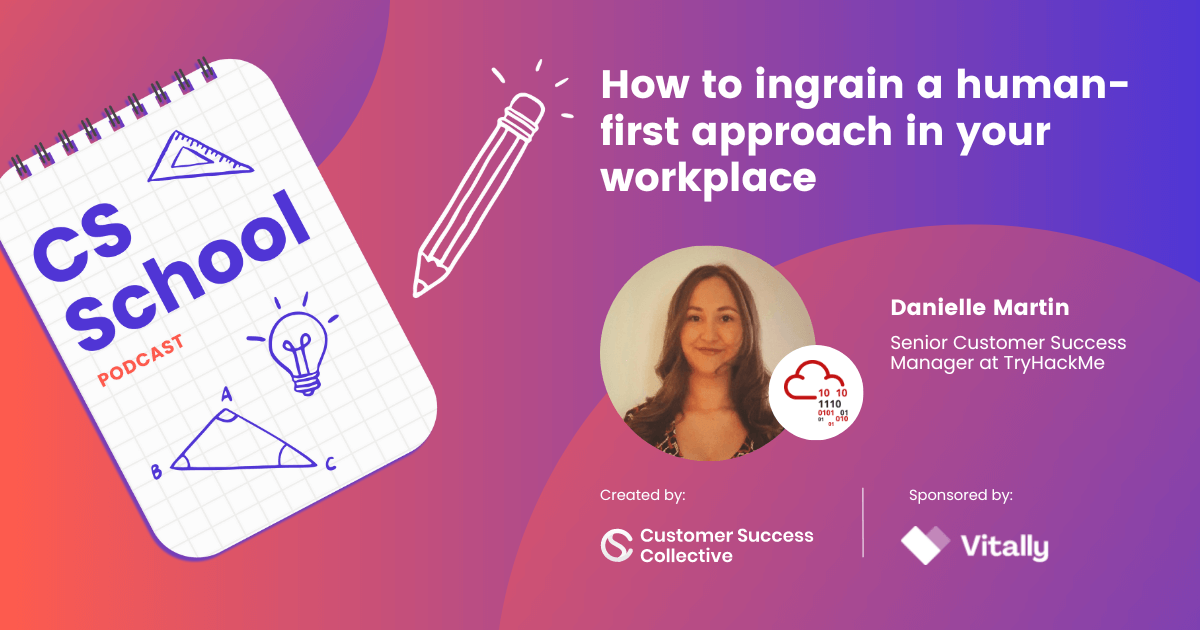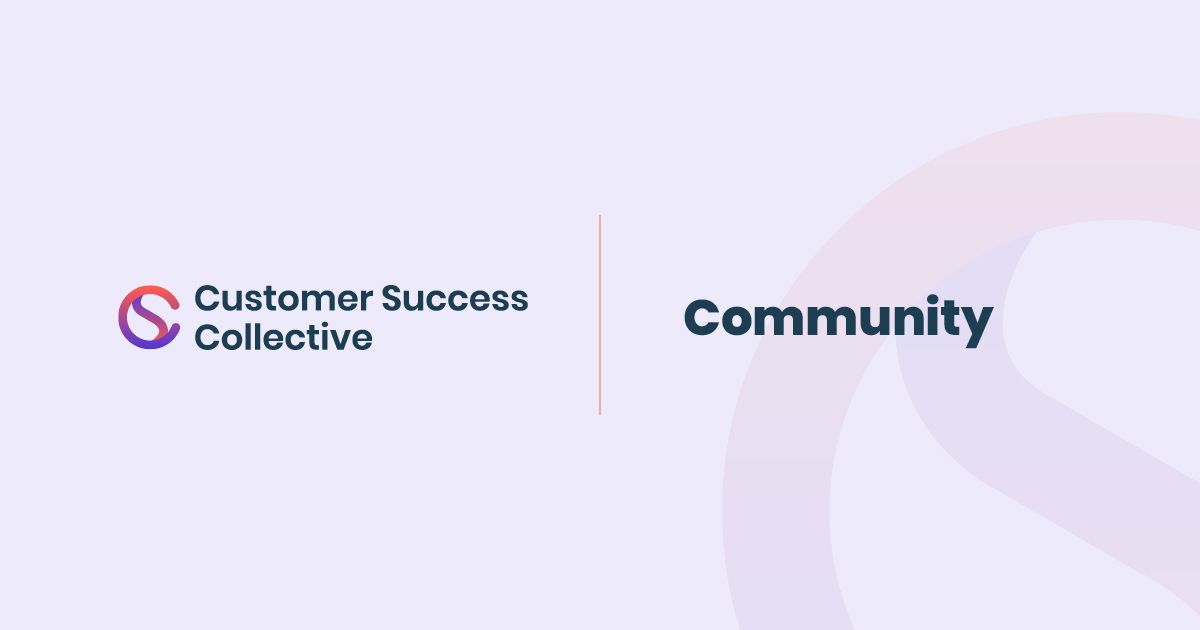In a rapidly evolving landscape – especially during a global pandemic – navigating the complexities of employee engagement and leadership presents a unique set of challenges and opportunities.
I'm Dylin Webster, the Global Head of Customer Success and Services at SAP Concur.
In this article, I'll share with you a playbook that has helped our organization not only survive but thrive in these turbulent times.
From fostering a sense of purpose and unity among your teams to reevaluating operations and creating adaptive working environments, we'll explore how to keep your organization resilient and responsive, because change is the one constant we all face.
Customer success during a pandemic
Imagine being part of the customer success team at SAP Concur in March 2020.
Our primary service is helping customers manage business travel expenses. So when the pandemic hit, it left us wondering how to help our customers extract value from a technology built to facilitate business travel. It led us to contemplate deeply about teamwork, adaptability, and facing an array of uncertainties.
During this challenging time, we put a lot of effort into building a culture of collaboration and engagement. We wanted to develop a winning playbook that centers on a human-first culture. This playbook has proven to be incredibly valuable time and again, especially as we've encountered various challenges
Let's be honest, 2020 was horrendous, and 2021 had us questioning if things were falling apart. 2022 felt like a dumpster fire!
Now, in 2023, while the atmosphere seems somewhat better, we’re still grappling with inflation, global unrest, supply chain disruptions, and fears of a recession. Not to mention the lingering worries about the potential impact of generative AI on our roles. Our teams are facing a multitude of unknowns.
Many companies, including ours, experienced significant disruptions in 2020. We had to rethink our go-to-market strategies. But let's not forget companies like Netflix, Zoom and Peloton, which thrived during the pandemic. The question is not if change is going to happen, but rather how we react and navigate through it.
During that unsettling period, I often found myself contemplating at my kitchen table, which also doubled as a desk, puzzle area, and Zoom meeting spot. Amidst the chaos, two things became crystal clear: taking care of our people and taking care of our customers.
1. Creating a secure environment for our teams
The world was rife with insecurity, so as leaders, we had the responsibility to create an environment where our teams felt secure and could effectively navigate these challenging times.
2. Engaging meaningfully with our customers
Business travel was at a standstill, but that didn't mean we stopped communicating with our customers. We took the time to call them, listen to them, and understand their unique challenges. From these conversations emerged opportunities to provide value through our technology in new and unexpected ways.
The iterative playbook: Five steps to navigate uncertainty
Over time, these experiences led us to formulate an actionable playbook, which has been continually deployed and fine-tuned, even into 2023. The playbook consists of five key steps:
Step 1: Be transparent and predictable
Transparency is key in times of uncertainty. Give your teams and your customers the information they need, as precisely and transparently as possible.
Step 2: Know your purpose
Having a clear sense of purpose guides you through chaos. Ensure that everyone on your team understands the company's mission and how their role contributes to it.
Step 3: Empower your people
Encourage team members to take initiative. When people feel empowered, they are more invested in overcoming challenges and finding solutions.
Step 4: Don't fear the U-turn
If something isn’t working, don't be afraid to pivot. A U-turn can sometimes be the quickest route to your destination.
Step 5: Find joy in community
Cultivate a sense of community among your team. Shared experiences and collective achievements can uplift spirits and strengthen the team's resolve.
The journey through the turbulence of 2020 and beyond taught us a lot. We've built trust, both within our teams and with our customers, and this playbook has been a key component in that journey.

The dangers of silence and disengagement
Let me take you back to an earlier phase in my career, during the onset of the housing crisis and the Great Recession. I was part of a small startup, roughly 30 employees strong. We were a close-knit group that engaged frequently in team meetings, one-on-ones, and casual hallway chats.
But something began to shift. I noticed more conversations happening behind closed doors and a decrease in group interactions. We all felt it. The lack of communication led to whispers and fears, which unfortunately turned out to be true. The majority of us were let go, leaving only five to pivot the company.
When employees are left in the dark, they're likely to become disengaged. And we know that disengagement isn't just about employee satisfaction; it has direct implications for business outcomes.
According to a 2022 study by Gallup, only 32% of workers were considered engaged. That's not active engagement, mind you. That's just showing up and doing the work.
What happens when an employee leaves?
There's an enormous cost involved in recruiting, hiring, and onboarding a new person, roughly 50% of the departing employee's total cost to the organization. But have you considered measuring the average tenure within your organization?
Losing tenured employees means not just replacing a body but also the loss of skills that contribute to customer satisfaction and retention.
The simple answer is that communication – or a lack of it – can make or break your efforts in navigating uncertainty. Open lines of communication eliminate the 'pregnant pause' that often leads to fear, storytelling, and ultimately disengagement.
Measuring not just the impact of a departing employee, but also how long your employees are sticking around, can give you invaluable insights. By understanding the average tenure, you can better gauge the hidden costs such as lost skills and its consequent impact on customer satisfaction and retention.
The power of transparency and purpose in a time of crisis
We know that in uncertain times, silence can lead to stories and those stories can lead to disengagement. During the peak of the pandemic, we made a commitment to bring everyone along even if we didn’t have all the answers.
We held more all-hands meetings, team meetings, and skip-level conversations. This became our first step in combating disengagement. It was also a way to understand where our teams were mentally and emotionally. We committed to open dialogue as the first layer of our strategy to keep our people engaged.
Anchoring actions in organizational values
It's great to have organizational values, but it's even more impactful to turn those values into actionable verbs. Our five values are:
- Embrace differences,
- Keep the promise,
- Build bridges, not silos,
- Tell it like it is, and
- Stay curious.
These values give our large, global team into a common language, a unifying thread. But how do we go beyond just listing values to making them actionable?
Translate organizational values into actions
During one of our last in-person leadership meetings before the world went into lockdown, we chose the snowy landscapes of Minneapolis, Minnesota for our backdrop.
It was a setting for what turned out to be a pivotal values exercise. We asked everyone to list three people they admired and to detail the behaviors and actions that earned their admiration, especially during challenging times.
We then compared these actions to our list of organizational values, looking for overlapping themes. What emerged was an authentic understanding of how these values could be action-oriented, personal, and directly connected to behaviors.
This exercise led to one of the most genuine team experiences I've ever been a part of, marked by vulnerability and real connections. Recognizing the power of individual values was an illuminating exercise for our leadership team. It wasn’t just a feel-good session; it fundamentally anchored each of us to a sense of purpose.
From that values exercise, I distilled my guiding principles into three values:
- Hope
- Courage
- Making a difference
These values have helped anchor me through difficult periods and provided a North Star for making decisions.
Values should be more than words on a wall; they should be part of your daily actions. Turning organizational values into action gives each of us an opportunity to contribute to the culture meaningfully. It also empowers teams to be proactive rather than reactive, especially during times of crisis.
By making these principles part of our lived experience, not only do we combat disengagement, but we also build a more resilient and empathetic team, leading to stronger customer relationships. And in today's uncertain world, that can make all the difference.

The importance of flexibility and interconnected teams in uncertain times
Now, onto the operational aspect. We know we need to engage people and make sure they have a sense of purpose. But how does this translate into how we actually do work?
The power of hidden teams
Based on research conducted by Gallup and ADP Research Institute and featured in a Harvard Business Review article, a powerful notion caught my attention: the power of hidden teams.
The concept shatters traditional org-chart thinking.
In modern work settings, teams are not just about hierarchical reporting; they are more about ephemeral, cross-functional connections. For customer success, this is particularly vital. We need to collaborate with a variety of internal and external stakeholders to deliver value to our customers.
This research revealed a direct correlation between the number of such 'hidden' teams one is part of and their level of engagement at work. It's a game-changing perspective.
Given the pandemic and its impact on our travel and expense business, we had to adapt quickly. We created new working groups that pulled in diverse members from across the organization. These groups were charged with understanding what our customers needed during this crisis and how our technology could adapt to meet those needs.
Simultaneously, we had to address our workforce. We found ourselves with an overstaffed implementation team due to reduced new customer acquisitions. This led to an internal pivot; we reallocated our human resources to focus on existing customer engagement and support.
Employee engagement, personal and organizational values, and adaptive operational strategies are not just nice-to-haves; they are essential for navigating uncertain times. We armed ourselves with the guidance of shared values and purpose, and we were nimble in our operations, leveraging the power of hidden teams to adapt to the changing landscape.
Our integrated approach not only helped us survive but positioned us to emerge stronger from this crisis. It built a resilience that is deeply embedded in our culture, which not only benefits us as employees but also extends to the customers we serve. And in a volatile, uncertain world, that resilience is more invaluable than ever.
Empowering teams to innovate and contribute
In response to the unprecedented challenges, we didn't resort to top-down directives; instead, we encouraged collaborative problem-solving.
Teams from diverse functions – sales, marketing, content, training, support services, and success - were called upon to bring fresh perspectives and ideas. The agenda was straightforward yet profoundly impactful: How can we add value to our customers in these trying times while also redeploying our overstaffed teams effectively?
Our teams exceeded expectations. They recognized that our customers now had new kinds of expenditures – home office equipment and wellness subscriptions, for example. They adapted our software capabilities to help customers manage these new categories effectively.
Moreover, our implementation teams, who found themselves with reduced workloads due to fewer new customers, were repurposed brilliantly. We offered free consulting sessions to existing customers, tapping into the deep expertise of these highly trained professionals.
This not only kept our team members employed and engaged but also bolstered our customer relationships.
We must underscore that this was not about merely giving our teams the "permission" to contribute. It was an active "invitation," almost a mandate, for them to be part of the solution. We wanted to create an environment where every voice matters, where everyone is accountable, and where everyone can see their fingerprints on the final product.
So, what did we achieve?
First, we kept our teams employed during an economic downturn, preserving the valuable human capital we had nurtured over the years.
Second, we strengthened our customer relationships by proactively addressing their new needs.
Third, and most importantly, we engaged our teams at a level that goes beyond routine job responsibilities. They weren’t just executing tasks; they were contributing to something bigger.
The outcome was a win-win situation - our customers felt supported and valued, and our teams felt more engaged and fulfilled.
It's not just about navigating crises; it's about doing so in a way that respects the humanity of each team member and customer. By combining transparent communication, a shared sense of purpose rooted in actionable values, and an adaptable operational model, we don't just "get through" challenges; we evolve through them.
We grow stronger, more resilient, and more connected, both as an organization and as a collective group of individuals. And that is a lesson we will carry forward – pandemic or no pandemic.
Don't fear the U-turn: The courage to reevaluate and pivot
When I started seven years ago, our CSM team was a group of six highly engaged individuals. Their scrappy nature and willingness to collaborate were commendable.
But as the team grew to 50, a troubling culture of exclusivity and resistance to collaboration evolved. And despite a range of initiatives, from psychological safety training to team-building exercises, their engagement scores remained stubbornly low.
Faced with this puzzle, we considered a bold move: What if we disbanded this CSM team and redistributed its members among other segments and senior leaders?
On one hand, the move led to increased cross-team collaboration. On the other, it gave rise to a slew of unintended consequences, creating an overwhelming burden for senior leaders who now had to manage varied team cultures, change management issues, and collaboration challenges all at once.
While some might view the redistribution as a failed experiment, we prefer to see it as a learning opportunity. The key takeaway? Don't fear the U-turn.
If something isn't working despite your best efforts, it's not a sign of failure to reevaluate and change course. In fact, the willingness to pivot reflects an organization's agility and responsiveness. The process, however bumpy, offered valuable insights into what truly impacts team dynamics and engagement.
By taking this route, we didn't just make a one-time decision; we committed to an ongoing process of evaluation and readjustment. In that process, we learned invaluable lessons about how to balance independence with collaboration, how to approach change management more effectively, and how to construct more agile and resilient teams.
We now understand that it’s less about having all the answers upfront and more about being willing to learn along the way.
"Don't Fear the U-turn" is more than a catchy phrase; it's a philosophy that empowers us to be both bold and adaptable.
Whether we're talking about keeping employees engaged, pivoting operational strategies, or even reassessing team structures, it's crucial to remain open to change. And most importantly, it's essential to keep learning, keep iterating, and keep striving for better.
In doing so, we not only solve immediate problems but also foster a culture of adaptability and continuous improvement.
Finding joy and community: The glue that binds us
After grappling with engagement, purpose, operational changes, and the freedom to pivot, we arrive at the emotional core of it all: community. The pandemic, among its many lessons, taught us the imperative need for human connection. Even as we navigated uncertainties and work-from-home dynamics, community remained a lighthouse guiding us through the rough seas.
We leaned into creative solutions to not just make work bearable, but enjoyable. We did an "SMB Cribs" initiative.
It wasn’t just a virtual tour of our homes; it was a tour into our lives, giving a more rounded picture of who we are beyond the 9-to-5. And let's not forget our team Peloton rides. Yes, they were a good workout, but more importantly, they symbolized a collective endeavor.
What really struck me about these activities was their ability to bring out our authentic selves. In an age where work-life boundaries have blurred, creating a space where people can fully express themselves has never been more important. These activities provided just that – a sense of belonging and inclusivity that acknowledged not just what we do, but who we are.
And this loops us back to the power of hidden teams. This feeling of community and the ad-hoc engagements. They’re not separate silos but interconnected components that feed into one another. When people feel like they’re part of something larger than themselves, engagement is a natural outcome.
As we navigate the challenges of 2023, keeping this sense of community alive remains a top priority. It's not just a strategy for surviving tough times; it's a blueprint for thriving in good ones. Creating a joyful, engaging workplace isn't a "nice-to-have"; it's a "must-have" for organizational health and success.
The path to engagement is multi-faceted, requiring a balance of open communication, a strong sense of purpose, operational intelligence, the courage to make U-turns, and most vitally, the creation and maintenance of community. It's not about having all the answers, but about fostering an environment where every challenge is met with resilience, creativity, and a deep sense of togetherness.
Measuring our success
After walking you through the journey of organizational change and sustained efforts in engagement, purpose, operations, flexibility, and community, the question you might ask is, “So, did it work?” The answer is a resounding yes, and we have the numbers to prove it.
Our logo retention rate has risen by an impressive 3.5%. For a field where we were already performing strongly, this increase is nothing short of extraordinary. It underscores that the strategies we've been discussing aren't just feel-good theories; they translate into real-world
Our leadership trust score stands at 71%, a significant leap from where we started. Trust, as we all know, is the cornerstone of any successful team. A high trust score signals a harmonious alignment between leadership and the broader team, something that bodes well for any organization's future.
But if there's one figure that sums up our success story, it's our employee engagement score. With a staggering 90% engagement level within our SAP Concur team, we've achieved something many companies only dream of. And to give you context, the global average stands at 38%, according to Gallup. Our number doesn't just suggest satisfaction; it screams dedication and commitment.
While these metrics indicate that we're on the right path, we're also open to making adjustments as needed. Just as a well-driven car requires both acceleration and the occasional U-turn, our strategy is designed to be agile, adaptive, and responsive to change.
We think we've found a formula that works, but the truth is, that the formula is ever-evolving. Our job is never done; the journey toward higher engagement, customer satisfaction, and overall excellence is continuous.
We're committed to learning, iterating, and evolving, all while staying true to our core principles.
This article is based on a presentation given by Dylin at the Customer Success Festival Las Vegas in May 2023.
Catch up on this presentation, and others, using our OnDemand service. For more exclusive content, visit your membership dashboard.
Have we piqued your interest in customer success leadership?
If our exploration of customer success leadership has stirred a desire to take your expertise to the next level, we have the perfect opportunity.
Enroll in our Customer Success Leadership program and become a champion of driving customer success while propelling business growth.
What to expect from this game-changing course:
🧠 Continuous, actionable leadership insights from industry pioneers
🔧 Practical leadership strategies and tactics to implement
📚 Hands-on activities and real-world case studies
💡 An endless stream of fresh ideas and diverse perspectives
🔥 Transform your leadership style
🧱 Build a strong personal brand with guidance.



 Follow us on LinkedIn
Follow us on LinkedIn












